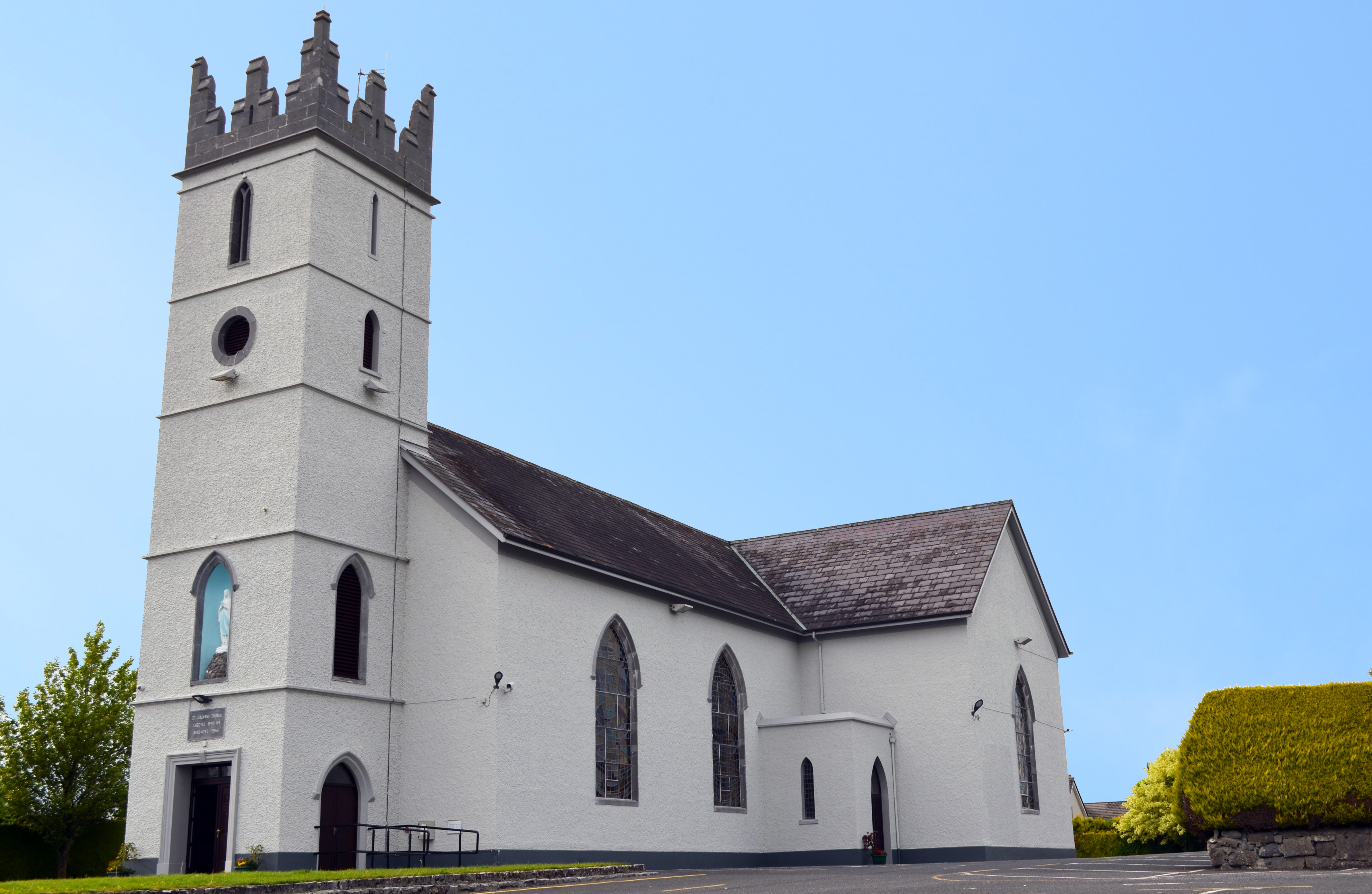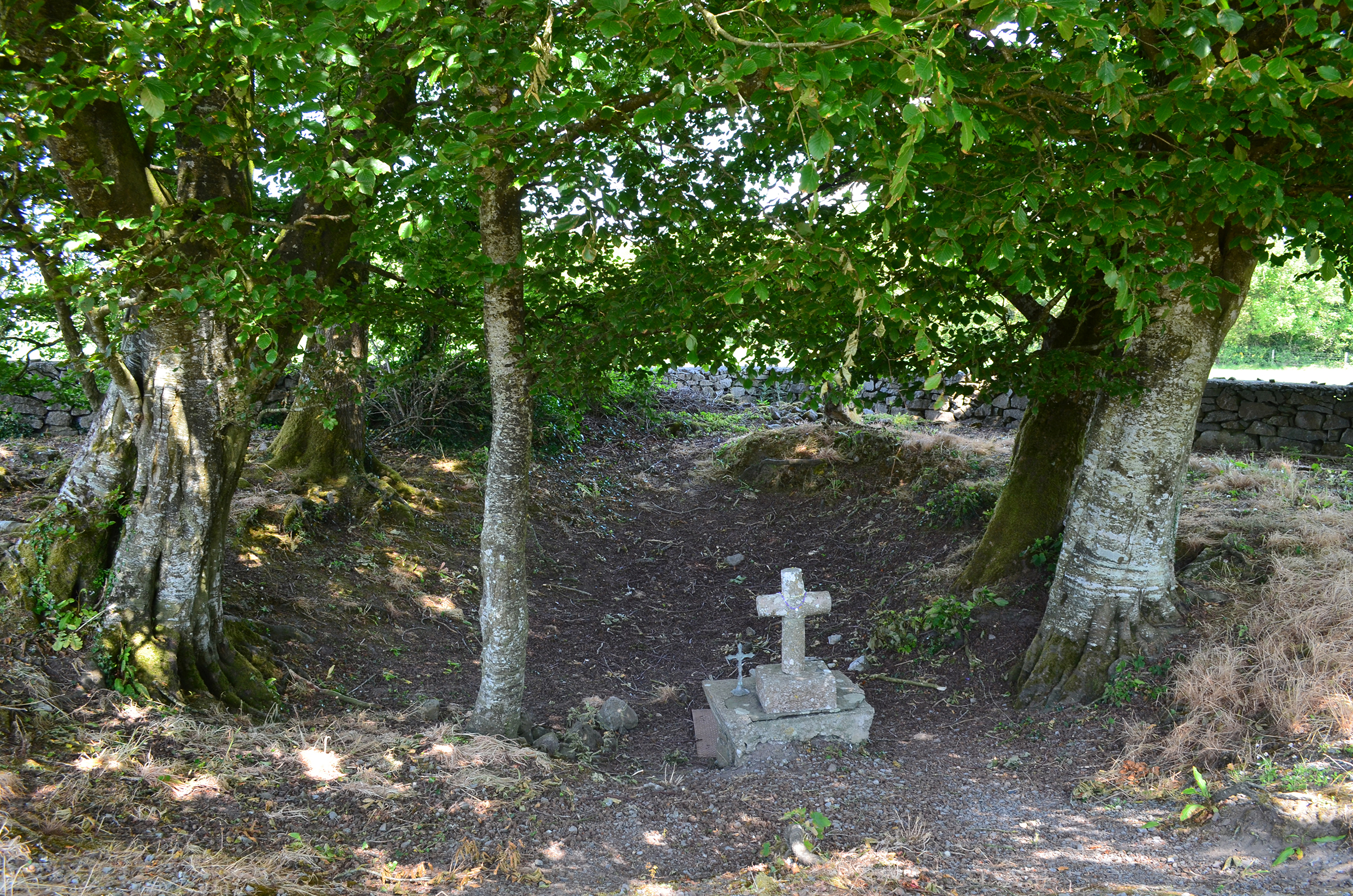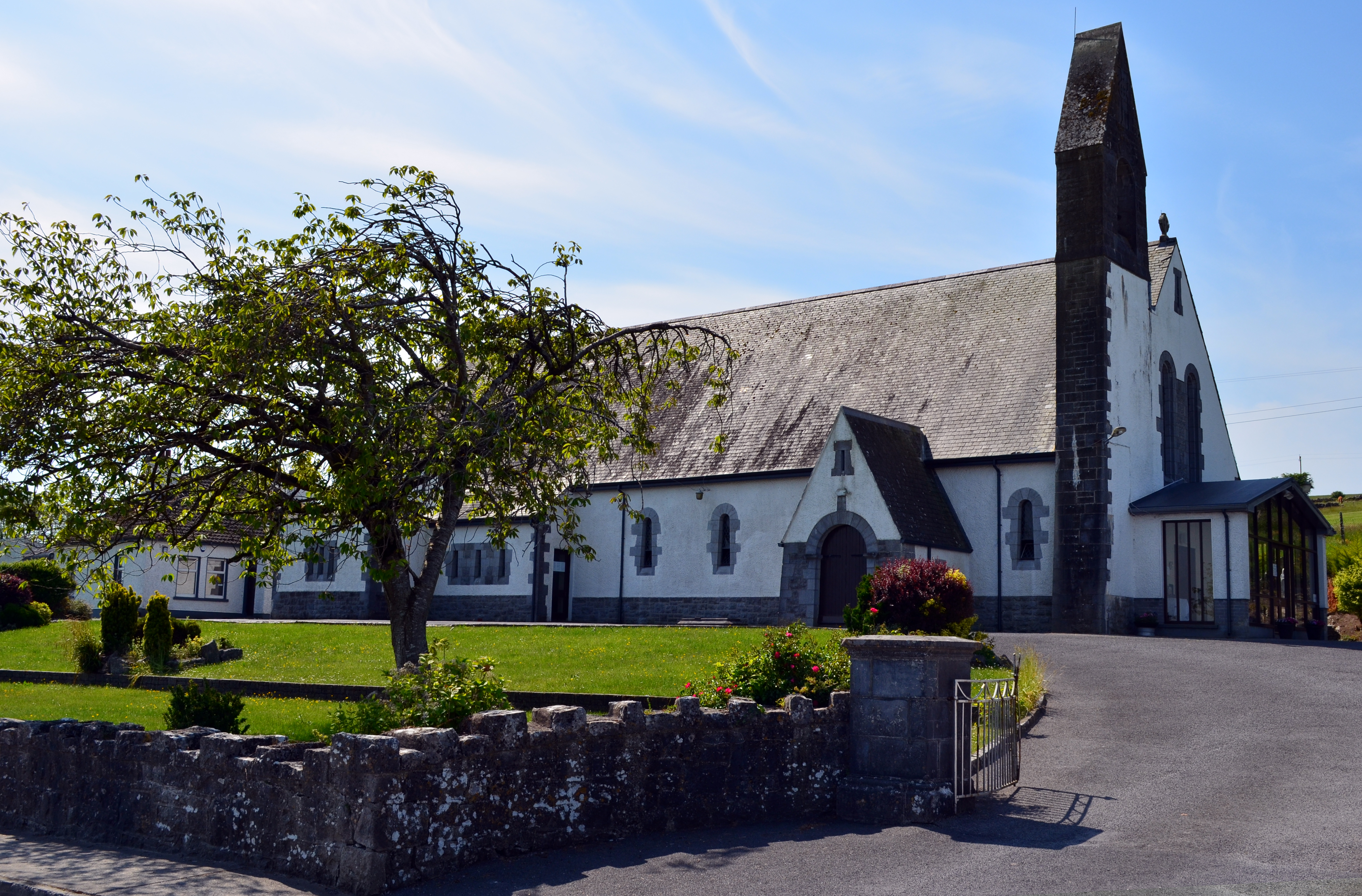Our Parish
Parish of Corofin and Belclare is a Catholic Christian community inspired by the teachings of Jesus Christ. We want to celebrate God's love for everyone through our words and actions.
Here you will find information and news covering the Pastoral Area of Cummer, Kilmoylan and Belclare.
We have two churches in our parish, St Colman's Church, Corofin and Sacred Heart Church, Belclare.
Corofin
Cummer & Kilmoylan is the older title of the parish.
Belclare (the mouth of the plain) and Killower (the church beside the well) might also be added. 
Cummer, meaning confluence, refers to the meeting of the Clare and its tributaries - the Grange & the Abbert.
Kilmoylan is translated as the Church of the Mound.
The popular name for this parish is Corofin (Coire Finne), meaning a large pool of clean, clear water. Corofin was an important centre in Norman times because there was a ford at Corofin across a large expanse of water which covered one-third of the parish. This was the only crossing point available between the two large areas of water stretching from south west of Tuam to Lackagh.
As Penal Laws began to wane in 1760, a low thatched church was built at Corofin. The present church begun in 1829 by a Belclare man, Fr. Pat Canavan, was completed and dedicated to St. Colman in 1844. Near Sylane National School is a Mass Rock, said to have been used in Penal times by Fr. Ulick Nally who evaded capture for many years by being employed as a butler by the landlord Malachy O'Connor. This family gave Corofin its second bishop - Dr. Thomas O'Connor, Bishop of Achonry (1788 - 1803)
Near Sylane National School is a Mass Rock, said to have been used in Penal times by Fr. Ulick Nally who evaded capture for many years by being employed as a butler by the landlord Malachy O'Connor. This family gave Corofin its second bishop - Dr. Thomas O'Connor, Bishop of Achonry (1788 - 1803)
Belclare
The first Belclare Church was on the northern slope of Knockmea at Churchfriar or Pollaturk, on the site of an old Franciscan house once affiliated to Ross Errilly Abbey near Headford. In 1924 it was replaced by the new Church of the Sacred Heart. 
The ruins of the old church, dedicated to St. Michael the Archangel, are situated 200 yards away from the present Belclare Church in a place called Churchfriar, which was the site of an ancient Franciscan Monastery, founded with the help of the De Burgo's in 1291.
Belclare is the curacy of the parish of Corofin and the longest serving curate was Fr. Varden (1919 - 1931) whose tombstone is the only one beside the new church. 
The first curate, Fr. Pat Canavan served as C.C. in Claretuam as it was then called, 1812 - 1816, when he became P.P. of Corofin until his death in 1856, spending most of forty years in Belclare and his fine tomb is in Churchfriar, beside the ruins of the old church which he reroofed after it was stripped on the Night of the Big Wind, 6 Jan 1839.
One of the many other curates to have served here is the present Archbishop of Tuam, Most Rev.Dr. Michael Neary who was here 1975 -'76.
History
In 1801, Dr Dillon, Archbishop of Tuam included in his list of parishes in the Archdiocese of Tuam the parish of Clare Tuam. The parish had one curate and an annual income of £70.
Lewis’ Topographical Dictionary of Ireland (1837) lists the parish of Belclare or Belclare-Tuam as being the head of a Union or District called Clare-Tuam, comprising the parishes of Belclare, Kilmoylan and Kilmacrean. It had two chapels situated respectively in Belclare and Kilmacrean. The chapel in Belclare is described as a good slated building recently erected. The parish had a school for Protestant females and two pay schools situated at Wood’s quay and Carabeg with 148 boys and 21 girls attending.
Kilmoylan is listed as being part of the Roman Catholic Union or district of Clare-Tuam. It had a public school with 80 pupils and a private school with 10 children. A chapel was in progress of erection at Curofin.
Kilmacrean also called Cummer is also listed as being part of the Roman Catholic Union or district called Clare-Tuam. or Currofin. It had a chapel at Currofin, described as a neat stone building, three public schools with about 270 pupils and one private school with 30 pupils.


